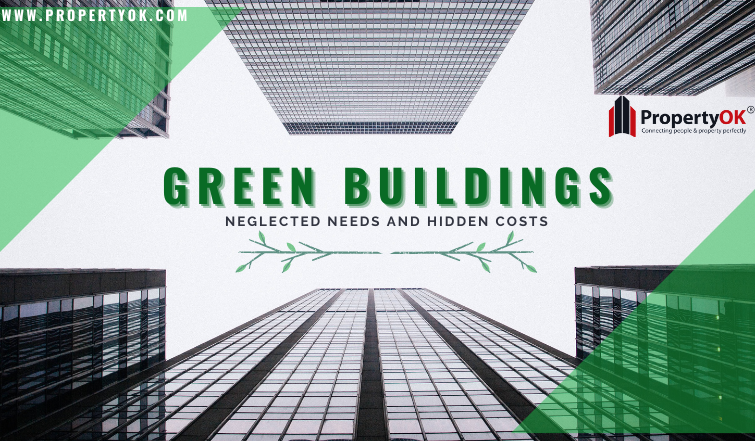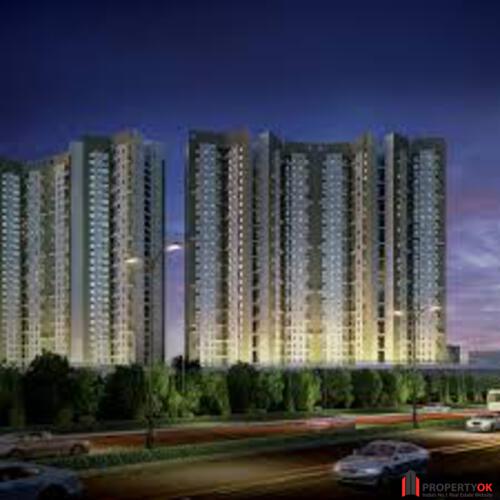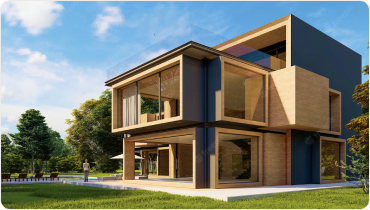It’s no secret that green buildings have become increasingly popular in recent years, with their energy efficiency and sustainability promises. But while we focus on the benefits of these eco-friendly structures, a darker side often goes unnoticed: neglected needs and hidden costs. From poor indoor air quality to high maintenance expenses, green buildings can come with unexpected challenges that must be addressed.
In this post, we’ll explore the dark side of green buildings and shed some light on what you need to know before investing in one.
Start living your best life: Let us help you find a home that perfectly fits your lifestyle and needs!

What is Green Building Concept?
The “green building” concept is a popular one these days, as more and more people are looking for ways to be more environmentally friendly. The idea is simple: construction and design that considers the environment and the need to conserve resources. This can mean using sustainable materials, energy-efficient systems, or even just making sure the building doesn’t harm the surrounding ecosystem.
However, there is a dark side to green buildings that are often overlooked: the neglected needs of the people who live and work in them. While green buildings may be good for the environment, they often come at the expense of comfort and practicality for occupants. For example, green buildings are often heavily insulated to reduce energy consumption, which can make them stuffy and uncomfortable. They may also lack adequate ventilation, leading to problems with mold and mildew.
What’s more, green buildings often come with a hefty price tag. The extra cost of sustainable materials and energy-efficient systems can make them unaffordable for many people. And because they’re often designed with environmental concerns rather than human ones, they can feel sterile and unwelcoming.
So while green buildings may be good for the planet, we need to make sure they’re also good for the people who will be living and working in them. Otherwise, we risk creating new problems even when trying to solve old ones.
Head over to this blog for more insights:
THE 5 TYPES OF BUILDINGS YOU SHOULD AVOID AT ALL COSTS
Indian Green Building Council
Green buildings are often touted as more environmentally friendly and sustainable than traditional ones. However, a dark side to green buildings is often neglected: the needs of the people who live and work in them.
The Indian Green Building Council (IGBC) is the foremost platform for certifying green buildings in India. IGBC seeks to promote green building practices that are both sustainable and responsive to human needs by bringing together stakeholders from industry, government, and civil society. The council works to develop standards and guidelines which encourage the use of renewable energy sources, water conservation measures, waste management practices, green materials, improved indoor air quality, healthy living spaces, and an overall holistic approach towards green buildings.
IGBC also provides training programs for professionals in the field of design, construction, and maintenance of green buildings. In addition, the council is committed to raising public awareness about green building concepts through a dedicated website and other initiatives.
Green buildings can be more expensive to build and maintain, leading to higher costs for tenants or owners. They can also be more difficult to modify or adapt, making it hard to meet the changing needs of occupants over time. And because green buildings are often designed with energy efficiency in mind, they can sometimes lack adequate ventilation, leading to poor indoor air quality.
The Indian Green Building Council (IGBC) is working to address these issues by developing standards for green buildings that consider the needs of occupants and the environment. The IGBC has also launched a program to certify existing buildings that meet its standards. By increasing awareness of the potential problems with green buildings and promoting best practices, the IGBC hopes to make green buildings truly sustainable.
Dig deeper into India’s housing crisis in this blog:
INDIA’S AFFORDABLE HOUSING CRISIS: IS THERE ANY HOPE FOR A SOLUTION?
Need for Green Building in India
In India, the need for green buildings is becoming increasingly apparent. The country’s rapidly growing population and economy are putting strain on its traditional sources of energy, water, and materials. Green buildings can help to address these challenges by using less energy and water and by recycling waste materials.
In addition, green buildings can improve the health and well-being of occupants by providing better indoor air quality and more natural light. They can also help to save money on utility bills and maintenance costs.
Getting Green Building Certification in India
In India, green building certification is voluntary, but there are several benefits to pursuing it. The most obvious benefit is the recognition that comes with being certified. This can help attract new customers and clients, as well as demonstrate a commitment to sustainability.
There are also financial incentives available for green buildings in India. These include tax breaks and subsidies from the government. Pursuing certification can also help you access low-interest loans and other financing options.
To get green building certification in India, you will need to follow a set of criteria that have been established by the Indian Green Building Council (IGBC). These criteria are designed to ensure that buildings meet the highest standards for energy efficiency, water conservation, and other sustainable practices.
The process for certification involves completing an assessment form, providing evidence of sustainability measures taken, and undergoing a series of inspections. Once all these steps are completed, your building will be eligible for certification.
It’s important to note that green building certification is a long-term commitment. Buildings must be regularly assessed and monitored to ensure they continue to meet the IGBC’s standards.
Getting green building certification in India can be lengthy and complex. However, working with a qualified consultant can make it much easier. A consultant can help you navigate the process, identify potential obstacles, and develop a comprehensive application.
Read this blog for expert opinions and analysis on property prices:
PROPERTY PRICES SET TO PLUMMET IN 2023? EXPERTS SHARE THEIR PREDICTIONS
The Different Types of Green Buildings
Green buildings come in all shapes and sizes, from LEED-certified commercial towers to local “green” homes. But not all green buildings are created equal. Depending on the certification system used, the location of the building, and the type of construction, green buildings can vary widely in their environmental impact and sustainability.
To get a better understanding of the different types of green buildings, let’s take a closer look at three common classifications: Leadership in Energy and Environmental Design (LEED), Living Building Challenge (LBC), and Passive House (PH).
Leadership in Energy and Environmental Design (LEED): LEED is perhaps the best-known green building classification system. Buildings can earn LEED certification by meeting certain standards in energy efficiency, water conservation, indoor air quality, materials selection, and other sustainability criteria. There are four levels of LEED certification as follows: certified, silver, gold, and platinum. The highest rating a building can achieve is platinum, which is given to less than 5% of all LEED-certified buildings.
Living Building Challenge (LBC): The Living Building Challenge is a more stringent classification system than LEED. To earn LBC certification, a building must meet rigorous standards in seven performance areas: site selection, water use, energy use, materials use, waste management, indoor air quality, and thermal comfort. In addition to these performance requirements, LBC-certified buildings must also be designed to
The Green Building Rating System in India
The Green Building Rating System in India is a voluntary, market-based rating system that provides guidelines for designing, constructing, and operating green buildings. The Rating System was developed by the Indian Green Building Council (IGBC), a non-profit organization promoting sustainable building practices in India.
The Rating System is designed to promote energy efficiency, water conservation, and waste management in green buildings. The Rating System consists of four tiers:
Tier 1: Basic requirements for a green building
Tier 2: Additional requirements for a green building
Tier 3: Enhanced requirements for a green building
Tier 4: Advanced requirements for a green building
To achieve each tier, points are awarded based on the achievement of specific credit criteria. The number of points required to achieve each tier varies depending on the type of building (residential, commercial, or institutional).
The Rating System is intended to be flexible to adapt to different climates and local conditions. In addition, the Rating System includes an optional Innovation Credit category that allows builders to earn points for innovative features not specifically addressed by the other credits.
Since its launch in 2007, nearly 1,000 projects have been registered for the Green Building Rating System in India.
Learn more about MahaRERA in this blog:
MAHARERA: THE REAL ESTATE REGULATORY AUTHORITY THAT IS CHANGING INDIA
5 Green Building Benefits
1. Reduced Environmental Impact
2. Improved Energy Efficiency
3. Enhanced Indoor Air Quality
4. Acoustic Performance
5. Increased Daylighting
The operational costs of green buildings are often higher than traditional buildings due to the need for more sophisticated equipment and maintenance. In addition, the embodied energy of green building materials can be significantly higher than that of conventional materials.
The hidden costs of green buildings can also include the following:
-Increased risk of mold and moisture problems due to tighter construction and lack of ventilation
-Higher incidence of Sick Building Syndrome due to poor air quality
-More frequent need for repairs and replacement of energy-efficient equipment
-Greater cost and complexity of recycling building materials at the end of the structure’s life
Also Read:
SUBVENTION SCHEME: A TRAP FOR THE UNWARY INVESTOR
Conclusion
In conclusion, green buildings can offer many advantages and potential environmental benefits. However, there is a dark side to this trend that needs to be addressed for it to be successful: neglected needs and hidden costs of constructing green buildings.
Building owners need to ensure they know all the costs associated with their projects and make sure these are factored into their budgets. By doing so, we can continue moving towards an increasingly sustainable future without sacrificing comfort or quality of life for building occupants.
Frequently Asked Questions:
1. What is green building?
Green building is an approach to construction that aims to minimize the environmental impacts of a structure by optimizing energy efficiency, water conservation, waste management, and other sustainable strategies. Green buildings focus on reducing environmental risks, maximizing resource savings, and finding ways to be more efficient regarding energy, water, and other resources. The goal is to help reduce emissions and create healthier indoor environments for occupants.
2. What are the 7 components involved in green building?
Green building involves seven components that must be taken into account for it to be successful: energy efficiency, water conservation, recycling and waste management, indoor air quality, materials and resources use, site design, and construction techniques. By considering these different components of green building, you can ensure a healthier and more sustainable environment for your project.
3. What are green building materials?
Green building materials may include sustainably sourced lumber, recycled steel and concrete, low-VOC paints and coatings, formaldehyde-free insulation, non-toxic adhesives, bamboo flooring, cork wall panels, energy-efficient appliances, and more. When used in combination with energy-efficient HVAC systems and properly designed roofs and windows, green building materials can help to reduce energy costs while providing a healthier indoor environment.

 Thank You
Thank You




